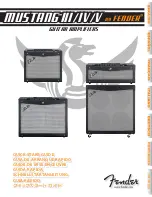
Data redazione: 25/07/03
R.V.R. Elettronica S.r.l. (BO)
VJ10000-TE - R.F. Tube Amplifier
19
CHAPTER 2
ELECTRICAL DESCRIPTION
2.1 INTRODUCTION
This chapter describes, in detail, the operating theory of the VJ10000-TE.
To aid understanding, the unit has been subdivided into modules (fig.1A), each of which is
fully described below.
2.2
CONSIDERATIONS ON WORKING PARAMETERS
The tetrode transmitter is equipped with polarization circuit much versatile that allows to
choise the working Class and the "circulation electrical angle".
When the transmitter is made in the firm is configured in Class B for small power input and
then automatically in Class C for high input power.
This choise allows to obtain the Reflected Power values read on driver not directly
connected with the absolute input reflected power on the tetrode.
The input circuit setting is optimized when the transmitter reaches the programmed output
power; in fact, for lower input power is normal to read reflected power values higher than
the reading on the driver meter.
The transmitter can work with different values of the maximum output power on condition
that lower of 10 KW continuous.
At each power value correspond a better antenna coupling ratio for the best energy
consumption efficency of the equipment.
The best energy consumption efficency of the transmitter is obtained when is evidence a
particular effect of the IG2 current: if the input power increase on the tetrode, there is a big
increasing of the IG2 current but the output power doesn’ t increase more.
A setting in according to the point in which you have the best energy consumption efficency
is advantageus economically, but is dangerous for the reliability.
In fact, if the mains voltage decreases lightly, the transmitter works with the tetrode satured,
with dangerous energy quantity on the harmonic components of the working frequency
present in the RF cavity that can cause electrical arcs with high probability of damage on the
amplifier.
Then, a value of the screen grid current near to the protection threshold could cause
sometimes breakings down of the service.
If the station has a good mains voltage with variations until +/- 7%, the transmitter can be
adjusted with antenna coupling to which corresponds a cavity amplifier efficiency of about
78% (Cavity Efficiency=Forward Power/VA*IA).
When the transmitter works with an high electrical efficiency, the amplifier cavity is tuned
with high Q loaded parameter value.
In This case is necessary to verify that the syncronous amplitude value doesn't increase until
no admissible values.
The operator has a table of characteristics values for the tunings adjusting, but for the great
importance that have some parameters against others, is correct to allow a great choise
freedom and to left to the operator competence the decision about the values to set the
transmitter.
















































